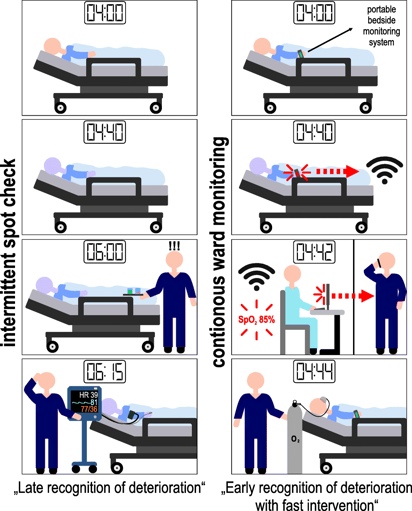Continuous Surveillance Monitoring: the Standard of Care
Did you know that adverse events due to medical error is the third leading cause of death in the USA1? As a result, nurses play a pivotal role in preventing and identifying complications and, therefore, are critically involved in recognizing and rescuing patients from deterioration following complications. No nurse should enter a room and unexpectedly find a patient in extremis or even worse. With surveillance monitoring, it provides an important safeguard, protecting patients when the nurse is absent, in order to prevent such a catastrophe from happening.

Today the standard of care in hospitals is that a nurse will wheel a large device around and spot-check patients for blood pressure and other vital signs. The problem is that such a method doesn’t give nurses and other clinicians a good look at what is actually happening to patients in between spot-checks, which are taken only every 4-6 hours.
With ViSi Mobile, continuous surveillance monitoring of the patient’s vital signs provide real time alerts to our clinical staff, changing our culture from reactive to predictive. Early detection of patient deterioration with continuous monitoring may prevent adverse events at your hospital.
When early detection matters, ViSi Mobile can make the difference.
